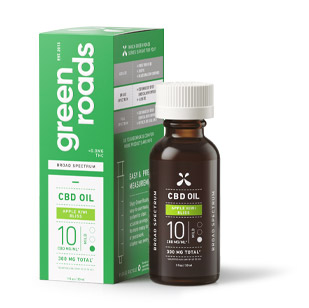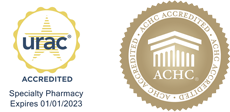It’s that time of year to raise awareness of how important it is to focus on heart health. Spread the word, motivating each other to make healthy lifestyle changes and prevent heart disease. Heart disease is the leading cause of death in the United States, so let’s fight this together!
What is hypertension?1
Hypertension is abnormally high blood pressure. Blood pressure is the force or pressure of the blood circulating against the walls of blood vessels, and is measured using two numbers. The top number is called the “systolic” pressure, which measures the force in the arteries each time your heart beats. The bottom number is called the “diastolic” pressure, measuring the pressure in the arteries between heart beats, when the heart is resting. Even though our blood pressure varies throughout the day, based on our activities, such as exercise or stress, it should not consistently remain high. A normal blood pressure level is less than 120/80 mmHg.
Types of Hypertension2,3,4
Essential hypertension
This type of hypertension is the most common, affecting about 95% of people with high blood pressure. A diagnosis of essential hypertension requires a high blood pressure reading on 3 or more doctor visits, without any known cause. People diagnosed with essential hypertension usually experience no symptoms, therefore it is important to keep scheduled check-up appointments and physicals.
Secondary hypertension
Secondary hypertension is caused by another medical condition or by an outside source. The most common cause is a defect in the arteries supplying blood to the kidneys. Other causes include obstructive sleep apnea, adrenal gland disorders, hormone imbalances, high salt diet, alcohol, and over-the-counter medications containing ibuprofen or pseudoephedrine. This type of hypertension can be controlled if the cause is found.
Resistant hypertension
About 25% of people with hypertension have resistant hypertension. This occurs when a person is taking 3 or more blood pressure medications and still has high blood pressure. Resistant hypertension is most commonly seen in the elderly and obese patients.
Isolated systolic hypertension
This type of hypertension is most common among our 65 and older population. As people age, the elasticity in the arteries decrease, causing a rise in the systolic pressure, the top number. If the systolic pressure rises above 140 and the diastolic pressure remains below 90, this is isolated systolic hypertension. This increases the risk for heart disease.
Hypertensive Emergency
A hypertensive emergency is rare, but is considered a medical emergency that should be treated in a hospital. Hypertensive emergency occurs when your blood pressure rises extremely quickly > 180/120 mmHg. A person can experience organ damage that may be life threatening including brain damage, stroke, injury to the kidneys, and heart attack.
Symptoms of Hypertension1,2
Hypertension is considered the “silent killer” because there are typically no warning signs or symptoms associated with it. Some people with hypertension, however, have reported complaints of headaches, feeling tired or dizzy, and nose bleeds. It is very important to periodically check your blood pressure to help your doctor diagnose any health problems early. Additionally, because you cannot feel blood pressure, it is important to take your medications, as directed by your doctor, to prevent complications of hypertension.
Diagnosing Hypertension3
Diagnosing hypertension should be based on an average of at least two readings, on two separate occasions. Checking blood pressure levels at home, using an automated monitoring device or blood pressure cuff, is preferred. Sometimes blood pressure readings at a doctor’s office tend to be higher. This is known as “white coat syndrome.” This can lead to inaccurate clinical decisions related to needed treatments.
Risk Factors for Hypertension1,2,3,5,8
- Elevated blood pressure (SBP 120-129 mmHg and DBP <80 mmHg) – Hypertension usually develops over time. A borderline high blood pressure, left untreated, could develop into hypertension or chronic high blood pressure.
- Obesity (BMI > 30kg/m2) – Research has shown a direct relationship between obesity and high blood pressure and is responsible for 40 to 78% of hypertension diagnoses. When a person is overweight, the heart has to work harder to pump blood throughout the body. This puts more strain on the arteries, causing blood pressure to increase.
- Smoking – Smoking can damage the heart and blood vessels throughout the body. Smoking produces a gas called carbon monoxide. When this gas is inhaled, it reduces the amount of oxygen that the blood can carry. Additionally, nicotine, found in cigarettes, narrows blood vessels, increasing blood pressure.
- Smoking – Smoking can damage the heart and blood vessels throughout the body. Smoking produces a gas called carbon monoxide. When this gas is inhaled, it reduces the amount of oxygen that the blood can carry. Additionally, nicotine, found in cigarettes, narrows blood vessels, increasing blood pressure.
- Alcohol – Drinking too much alcohol can increase blood pressure because alcohol causes the body to release proteins and hormones into the bloodstream that make blood vessels constrict or get narrower. When blood vessels constrict, normal blood flow is prevented, which increases blood pressure.
Know the limits:
- Women = no more than 1 drink per day
- Men = no more than 2 drinks per day
- Diet – It is important to eat a well-balanced diet that is not too high in sodium (salt) and not too low in potassium. Foods that are high in sodium (canned or boxed foods and restaurant foods) can increase blood pressure. Not eating enough potassium in meals can also cause high blood pressure. Potassium is an electrolyte that our body needs to function properly, especially our heart. Some healthy foods that contain potassium include sweet potatoes, beets, beans, and bananas.
- Heredity – Of course, we cannot change our past, but family history can be a contributor to health conditions. If there has been a family history of high blood pressure, this can increase a person’s risk of having high blood pressure themselves.
Complications of Hypertension1
If blood pressure remains high, it can damage important organs in the body causing serious health conditions.
- Heart disease (angina, heart attack, heart failure) – High blood pressure makes the heart pump harder, putting extra force on arteries. This can damage the arteries, which decreases blood flow and oxygen to the heart.
- Stroke – High blood pressure can cause the pressure in the arteries to be too high. The arteries that supply blood and oxygen to the brain can burst or become blocked from a clot causing a stroke. When the brain stops getting enough oxygen, brain cells die causing disabilities in basic activities such as speech and movement.
- Kidney disease – The force of high blood pressure can cause damage to the blood vessels and filters making it difficult for the kidneys to do their job of removing waste and toxins from the body and returning important nutrients and vital substances into the bloodstream.
Treating Hypertension1
There are countless oral medications used today to help treat high blood pressure. Since every person’s body has different needs, the best first step is talking to a doctor about what will work for you. Blood pressure medications work in different ways. Some relax blood vessels, while others cause your heart to beat with less force. Another type causes your body to get rid of excess fluid (water). When your body holds on to more fluid, the heart has to work harder to push blood through blood vessels, causing high blood pressure. Many individuals may need to take more than one medication to control their blood pressure. Talk to the doctor about how long the medication will take to start working and make sure to take the medication exactly how the doctor prescribes it.
6 Ways to Prevent Hypertension6,7
Healthy living is key!
- Healthy Eating — Eating a variety of foods rich in potassium, fiber, protein, low in sodium (salt), and low in saturated fat can help control hypertension. A healthy diet plan called DASH (Dietary Approaches to Stop Hypertension) has been proven to help people lower their blood pressure.
Daily and Weekly DASH Eating Plan Goals for a 2,000-Calorie-a-Day Diet
| Food Group | Daily Servings |
| Grains | 6-8 |
| Meats, poultry, and fish | 6 or less |
| Vegetables | 4-5 |
| Fruit | 4-5 |
| Low-fat or fat-free dairy products | 2-3 |
| Fats and oils | 2-3 |
| Sodium | 2,300 mg |
| Food Group | Weekly Servings |
| Nuts, seeds, dry beans, and peas | 4-5 |
| Sweets | 5 or less |
- Healthy Weight – Keeping a healthy weight will decrease the risk of high blood pressure. To determine whether a certain weight is healthy, doctors usually calculate body mass index (BMI). If you know your height and weight, you can calculate your BMI using this link.
- Physical Activity – Staying physically active can help lower blood pressure. Adults should get at least 30 minutes of continuous moderate-intensity exercise 5 days a week, such as brisk walking or bicycling. Children and teenagers should get at least 1 hour of physical activity every day.
- Do Not Smoke – Smoking increases blood pressure and increases risk of heart disease and stroke.
- Limit Alcohol Use – Drinking alcohol increases blood pressure. As mentioned above, men should have no more than 2 alcoholic drinks per day, and women should have no more than 1 alcoholic drink per day.
- Get Plenty of Sleep – Not getting enough rest can increase your blood pressure. Most adults need at least 7 hours of sleep every night. Sleep helps the body recover and function properly.
References:
- High blood pressure symptoms, causes, and problems | cdc.gov. Centers for Disease Control and Prevention Web site. https://www.cdc.gov/bloodpressure/about.htm. Updated 2020. Accessed Feb 11, 2021.
- Hypertension types – hypertension center – everyday health. EverydayHealth.com Web site. https://www.everydayhealth.com/hypertension/understanding/types-of-hypertension.aspx. Accessed Feb 11, 2021.
- 2017 ACC/AHA/AAPA/ABC/ACPM/AGS/APhA/ASH/ASPC/NMA/PCNA guideline for the prevention, detection, evaluation, and management of high blood pressure in adults: A report of the american college of cardiology/american heart association task force on clinical practice guidelines. Hypertension. 2018;71(6):e13-e115. https://www.ahajournals.org/doi/10.1161/HYP.0000000000000065. Accessed Feb 17, 2021. doi: 10.1161/HYP.0000000000000065.
- Resistant hypertension: Diagnosis, evaluation, and treatment. Circulation. 2008;117(25):e510-e526. https://www.ahajournals.org/doi/10.1161/circulationaha.108.189141. Accessed Feb 17, 2021. doi: 10.1161/CIRCULATIONAHA.108.189141.
- Facts about moderate drinking | CDC. https://www.cdc.gov/alcohol/fact-sheets/moderate-drinking.htm. Updated 2021. Accessed Feb 21, 2021.
- Prevent high blood pressure | cdc.gov. Centers for Disease Control and Prevention Web site. https://www.cdc.gov/bloodpressure/prevent.htm. Updated 2020. Accessed Feb 21, 2021.
- DASH Eating Plan | NHLBI, NIH. Nhlbi.nih.gov. https://www.nhlbi.nih.gov/health-topics/dash-eating-plan. Published 2021. Accessed February 22, 2021.
- Husain K, Ansari RA, Ferder L. Alcohol-induced hypertension: Mechanism and prevention. World J Cardiol. 2014;6(5):245-252. https://www.ncbi.nlm.nih.gov/pmc/articles/PMC4038773/. Accessed Feb 24, 2021. doi: 10.4330/wjc.v6.i5.245.




